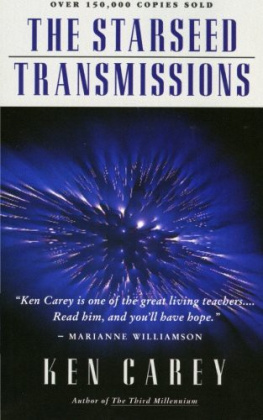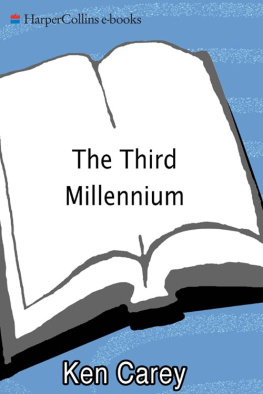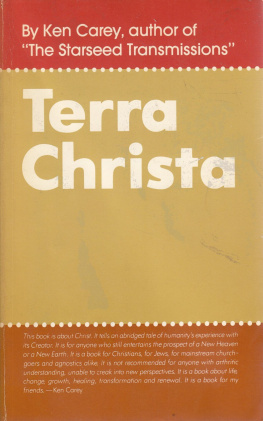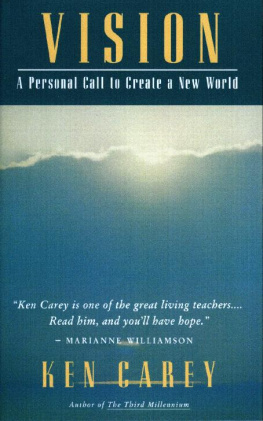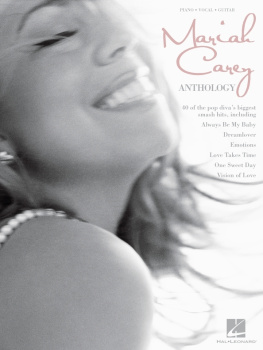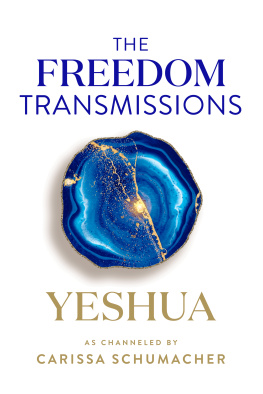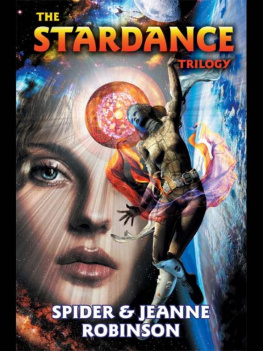Ken Carey - The Starseed Transmissions
Here you can read online Ken Carey - The Starseed Transmissions full text of the book (entire story) in english for free. Download pdf and epub, get meaning, cover and reviews about this ebook. year: 1991, publisher: HarperOne, genre: Science fiction / Religion. Description of the work, (preface) as well as reviews are available. Best literature library LitArk.com created for fans of good reading and offers a wide selection of genres:
Romance novel
Science fiction
Adventure
Detective
Science
History
Home and family
Prose
Art
Politics
Computer
Non-fiction
Religion
Business
Children
Humor
Choose a favorite category and find really read worthwhile books. Enjoy immersion in the world of imagination, feel the emotions of the characters or learn something new for yourself, make an fascinating discovery.
- Book:The Starseed Transmissions
- Author:
- Publisher:HarperOne
- Genre:
- Year:1991
- Rating:5 / 5
- Favourites:Add to favourites
- Your mark:
- 100
- 1
- 2
- 3
- 4
- 5
The Starseed Transmissions: summary, description and annotation
We offer to read an annotation, description, summary or preface (depends on what the author of the book "The Starseed Transmissions" wrote himself). If you haven't found the necessary information about the book — write in the comments, we will try to find it.
The Starseed Transmissions — read online for free the complete book (whole text) full work
Below is the text of the book, divided by pages. System saving the place of the last page read, allows you to conveniently read the book "The Starseed Transmissions" online for free, without having to search again every time where you left off. Put a bookmark, and you can go to the page where you finished reading at any time.
Font size:
Interval:
Bookmark:
The Starseed
Transmissions
OTHER BOOKS BY KEN CAREY
The Third Millennium
Return of the Bird Tribes
Vision
Flat Rock Journal
Ken Carey
HarperSanFrancisco
A Division of HarperCollinsPublishers
HarperSanFransico and the author, in association with The Basic Foundation, a not-for-profit organization whose primary mission is reforestation, will facilitate the planting of two trees for every one tree used in the manufacture of this book
THE STARSEED TRANSMISSIONS. 1982 by Kenneth X. Carey. 1995 by Kenneth X. Carey. All rights reserved. Printed in the United States of America. No part of this book may be used or reproduced in any manner whatsoever without written permission except in the case of brief quotations embodied in critical articles and reviews. For information address HarperCollins Publishers, 10 East 53rd Street, New York, NY 10022.
FIRST HARPERCOLLINS PAPERBACK EDITION PUBLISHED IN 1991
Library of Congress Cataloging-in-Publication Data
Carey, Ken.
The starseed transmissions / Ken Carey. 1st HarperCollins pbk. ed. p. cm.
ISBN 0-06-250189-5 (alk. paper)
1. Spirit writings. I. Title
BF1301.C353 1991
133.9'3dc2090-56461 CIP
This book is dedicated to all conscious life,
with special acknowledgment to that aspect of Life
that many have come to regard as
The Spirit of Greenwood Forest. I offer my
deep thanks to those gentle trees whose
snowladen branches bowed protectively
across the road through our wood, providing
the author with eleven magical days of
silence and communion.
Introduction to the 1995 Edition ix
Introduction 1
Singularity of Consciousness 3
The Other Reality 8
The Shadow of Future Creation 14
An Interval of Non-Time 20
Mobile Cities of Light 26
6 A Psychological Process 36
The Dance of Life 42
Planetary Symphony 50
Islands of the Future 54
The Living Information 59
Education of Spirit 69
An Open Ending and A New Beginning 76
Afterword 85
With the acquisition of language, a vast range of perception is disregarded. A child soon comes to believe that if there is no word for something it does not exist. Sensory input that is not reinforced is deemphasized, until eventually the child accepts the cultural viewpoint, with all of its biases and underlying assumptions. In the process something valuable is lost.
The benefits of language are obvious. Without it, each new generation would repeat the mistakes and forego the learning of the past. Without it, our race could not advance. But the view of ourselves and our world that comes to us through language is but a thin sliver of the multidimensional reality we inhabit.
This larger reality has fascinated me since childhood. I have never been without at least some minimal awareness of it, and through the years there were always those odd moments when my mind would relax into a form of perception that brought me fully into its strange and curious domain. Often, this perception would come forward to help me establish with a plant or an animal a rapport deeper than what I found possible when viewing things from a cultural perspective. Although my language-oriented mind would later remember that these incidents occurred, since my experiences were nonverbal I rarely remembered much of their contents or detail.
It was not until one day in the winter of 1978 that I made my first attempt to verbalize what I experienced during one of these states. In bed with a cold and fever, my thoughts experienced myself as energy, and my body as an intertwining of sun and soil.
Was this the awareness of the newborn and the very young? Everything that touched my senses, every nuance of sound and light, every object in the room felt as intimate to me as the lungs through which I breathed, as inseparable, as personal. Insights did not come as flashes but as things I had always known, truths so obvious it was hard to believe I could have forgotten them. But I had ... and might again. Could this awareness be expressed, articulated, recorded in words?
Language only limits perception when its terms are taken too seriously. Taken lightly, the attempt to find words to record our impressions can help us to perceive more fully. Verbalizing this awareness would challenge me to clarify my experience of it. Yet its very nature seemed to defy definition. To translate it into symbolic characters on sheets of paper would be like trying to channel a river through an hourglass. The very impossibility of the task intrigued me. I put a new ribbon in the typewriter.
During the eleven days that followed I wrote my first book, The Starseed Transmissions. I wrote that book and the companion volumes that followed to help me remember what I too often forget: that I inhabit a world far richer and more complex, far more potent and beautiful than the one superimposed by the interpretations of a species whose consciousness has yet to catch up with its capability.
While our technology has brought us to the moon, our thinking has remained clouded by assumptions formed in a primitive world of treetops and savanna. Our languages have conditioned us to see the earth through a filter of the past, a murky glass of mammalian wants and needs. We repeat the errors of history, forgetting that history is just a habit and can, like any habit, be changed.
The four Starseed volumeswhich conclude with The Third Millenniumcombine to form a preliminary outline of a work in progress: a planetary work of biological art soon to become conscious of itself in a new and historically unprecedented way.
Certain chapters in these volumes speak of the past; others, of the future. All relate to the present. Like the pages of a blueprint, some chapters show the northern view of the work in progress, others, the southern, eastern, and western. Return of the Bird Tribes provides examples of people whose passion for the truth revolutionized their societies: White Buffalo Calf Woman introducing the sacred pipe ceremony to the Sioux; the Great Peacemaker forging the Iroquois Confederacy. The overview of planetary evolution recorded in Vision complements these historical insights with a first-person singular. narrative quite different from the plural used in The Starseed Transmissions and The Third Millennium. But differences define the spokes of a wheel, and without them our world would not turn.
To fully awaken the earth requires each of us: a blade of grass, a gull, a passing cloud, a squirrel, a dolphin, an oak tree. Spiritually, our race is superior to none of these.
Yet this truth is misapplied if it causes us to overlook our potential or underestimate our uniqueness. For better or for worse, we influence the earth more than any other species. More often than not our historical influence has been destructive. Our, survival and the survival of countless species now hinges on making the changes in consciousness that will end this cycle. The Starseed material addresses the habits of perception that lie at the root of destructive human behavior, and the moment-to-moment awareness that can bring our influence wholly into the realm of the creative.
Except for the occasional accessing of individual memory records, the awareness I experienced while transcribing this series did not differentiate between I, you, and we. It was unable to comprehend our overliteral use of these terms, and seemed to regard language rooted in such rigid divisions of self as little better than primate babble.
Whatever success I have had expressing an awareness so antithetical to the implicit assumptions of language would not have been possible without the help of intermediary forms of intelligence. Over time I came to think of them as "informational beings." What they truly are is not so easily labeled. They described themselves as "condensations of consciousness" in a sea of universal being, temporal embodiments of eternal qualities, ever changing in form and content, yet consistent in the qualities they represent. Introducing themselves to me in the opening chapters of The Starseed Transmissions they explained:
Font size:
Interval:
Bookmark:
Similar books «The Starseed Transmissions»
Look at similar books to The Starseed Transmissions. We have selected literature similar in name and meaning in the hope of providing readers with more options to find new, interesting, not yet read works.
Discussion, reviews of the book The Starseed Transmissions and just readers' own opinions. Leave your comments, write what you think about the work, its meaning or the main characters. Specify what exactly you liked and what you didn't like, and why you think so.

